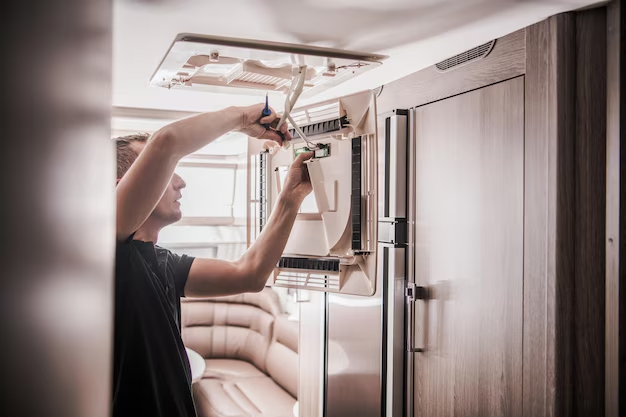Getting Your Refrigerator Cold: How Much Time Does It Really Take?
Whether you're unboxing a brand-new refrigerator or turning on an old faithful after a big clean, understanding how long a refrigerator takes to reach optimal cooling temperature is crucial. This deceptively simple questionoften summarized through an informed guesstimate requires careful consideration of a host of factors. Let’s delve into this intriguing topic and unpack all the elements that affect your refrigerator’s cooling time.
The Journey to Chill: What to Expect
❄️ Typical Cooling Times
Generally, refrigerators require about 12 to 24 hours to reach a stable cooling temperature once powered on. This time frame, however, can greatly vary based on several factors including:
- Brand and Model: Different designs come with different technologies.
- Size: Larger units with more space often need more time.
- Initial Temperature: The warmer the internal temperature at the start, the longer it will take.
🔍 Factors Influencing Cooling Times
1. Refrigerator Size and Type
Larger refrigerators naturally take longer to cool down due to the increased space that requires cooling. Similarly, fridge-freezer combos may cool unevenly, with refrigerators reaching optimal temperatures quicker than freezers or vice versa.
2. Indoor Environment
The temperature and humidity levels of the environment where the refrigerator operates play a significant role. Warmer ambient conditions mean the fridge has to work harder to achieve and maintain cooler internal temperatures.
3. Initial Loading
Loading your fridge immediately with warm items will extend the time it takes to reach desired coolness. It’s advisable to give the appliance a good amount of time to chill empty before stocking it with foods.
4. Technology and Features
Modern refrigerators equipped with advanced cooling technologies, such as dual evaporators or Inverter Linear Compressors, often achieve cooler temperatures quicker and stabilize better than older models.
Best Practices for Efficient Cooling
🌟 Optimizing Your Refrigerator’s Performance
Here are some practices to ensure that your refrigerator reaches its chilling potential efficiently:
- Proper Placement: Leave adequate space at the back and sides of the refrigerator for air circulation.
- Temperature Setting: Set your fridge to the recommended settings usually indicated in the user manual.
- Door Management: Avoid leaving the door open longer than necessary; frequent opening stresses the cooling system.
- Avoid Overloading: Keep items spaced to allow air circulation within the compartments.
✅ Practical Checklist for Faster Cooling
Here's a quick guide to help maximize your refrigerator's cooling efficiency:
- 📍 Location matters: Keep it away from direct sunlight and other heat sources.
- ♻️ Ventilation: Ensure a few inches of space around the appliance.
- ⏱️ Initial run: Let it run empty to stabilize.
- 🌡️ Correct temperature setting: Usually around 37°F for the fridge and 0°F for the freezer.
- 🚪 Control door usage: Open the door only when necessary.
Troubleshooting Longer Cooling Times
🛠️ When Things Don't Go as Planned
Sometimes, despite your best efforts, your fridge may take longer to cool than anticipated. Here's how to troubleshoot:
- Check the Thermostat: Ensure it's set correctly.
- Inspect the Seal: Damaged door seals let cool air escape.
- Look at the Condenser Coils: Dusty coils impede cooling efficiency. Clean them periodically.
- Listen for the Compressor: It should run smoothly; any irregular noises could signal an issue.
- Assess with Professional Help: If problems persist, a professional technician can diagnose deeper issues.
How Long Should You Wait Before Putting Food In?
🍏 Making the Most of Your Refrigerator’s First Day
Putting food in too soon can prolong the cooling process, so patience is key. Allow your fridge the necessary startup time (typically up to a full day) before loading it up. Once it's cold, keep these tips in mind:
- Organize Cleverly: Store perishables in the coldest parts (usually the back).
- Avoid Overpacking: Optimizing airflow keeps temperatures consistent.
- Use Containers: Reduces odors and prevents contamination, better preserving food.
Why Proper Temperature Settings Are Crucial
🔥 The Essence of Correct Refrigerator Settings
Accurately setting your refrigerator's temperature is not just about keeping things cold. It’s about preserving food safely and efficiently. Here’s why it matters:
- Preventing Spoilage: Proper temperatures inhibit bacterial growth, maintaining food quality and safety.
- Energy Efficiency: Overly cold settings overwork the fridge unnecessarily, increasing energy consumption.
- Equipment Longevity: Efficient temperature management contributes to appliance longevity.
🌡️ Recommended Temperature Settings
While general advice often recommends 37°F for refrigerators and around 0°F for freezers, variations may exist based on:
- Brand and Model Suggestions: Always defer to your specific model's manual for guidance.
- Type of Food Stored: Certain items may require specific conditions.
Closing Insights: Embrace the Cool Down
As you unpack the intricacies of refrigerator cooling times, the focus rests on understanding and applying strategies that optimize performance. Not all fridges are created equal, and knowing the factors that affect timing helps empower your efficiency game.
It's all about patience and preparedness: waiting that initial period before adding your groceries results in a landmark step toward food safety and appliance efficiency. Without a doubt, embracing informed measures equips you with the knowledge to keep your cooler running optimally, every chill and thrill in place. 🍦
Quick Recap: Key Takeaways ✨
- Typical Cooling Time: Expect 12-24 hours for full stabilization.
- Factors Affecting Time: Size, environment, technology, and loading.
- Optimizing Tips: Good placement, temperature settings, and door discipline.
- Troubleshooting: Check thermostats, seals, coils; consult experts if necessary.
- Temperature Importance: Prevent spoilage, save energy, extend appliance life.
With these insights, you’re set to wrangle your refrigerator’s cooling prowess. Whether you're rushing to preserve fresh produce or prepping for a party, understanding these details can make your refrigerator a more efficient, reliable fixture in your kitchen.
